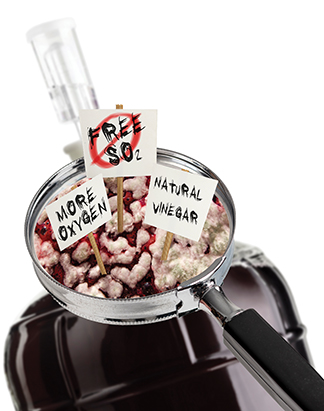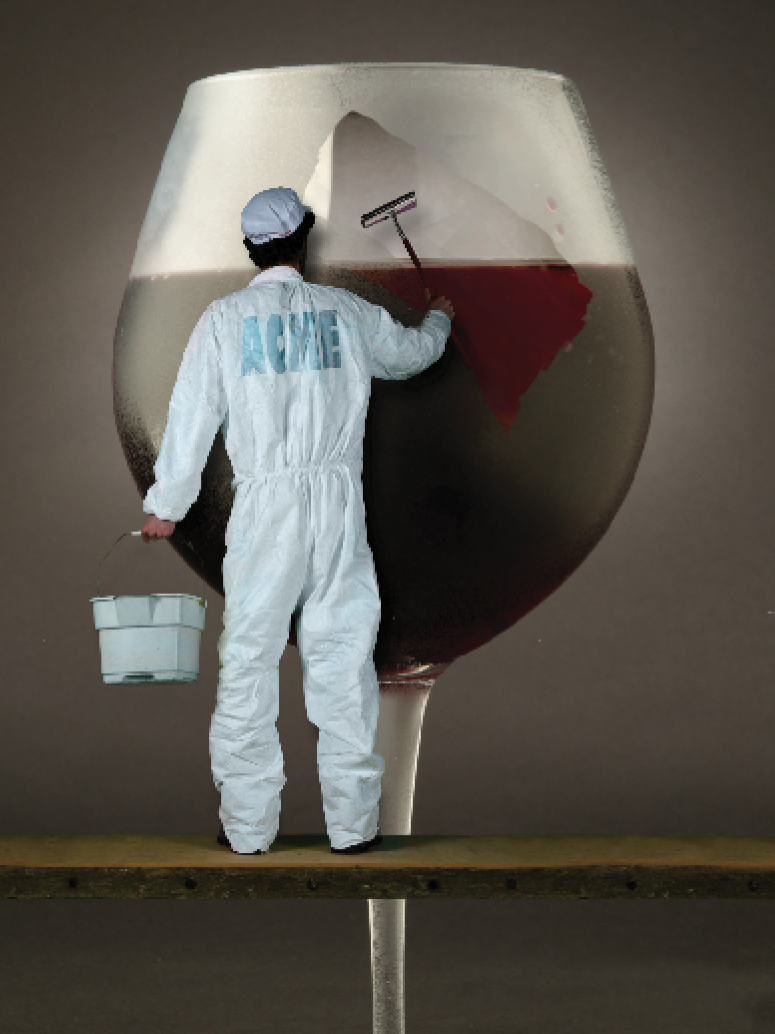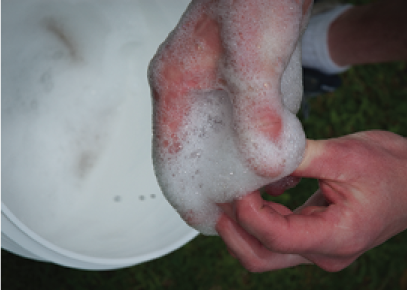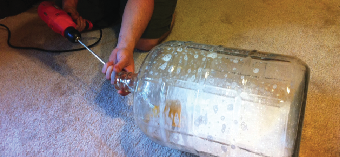Topic: Cleaning-and-Sanitation
Dealing With Hard Water
Great question — and you’re right to pause before filling up your winemaking bucket straight from the tap. While clean municipal water might be fine for drinking or dishwashing, it can introduce
Removing Stains in Carboys
There is indeed a combination of things I think could help, but it may take a little bit of elbow grease on your part. Two years is a long time for a
Sanitizing with Sulfur Dioxide and Citric Acid
I’m happy to help clear up the argument for you. First, I have to say, “good on you” (as my New Zealand harvest interns used to say) for questioning what you hear;
Microbial Stability
Chemical and microbial stability measures must be taken after fermentation but prior to bottle aging to protect the wine from contamination and subsequent off-aroma generation caused by microbial metabolism. Learn the most common methods for achieving microbial stability, both during aging in the cellar and at packaging.
Remove a White Film on Carboy
Wow, looks like you’ve got a serious case of “Ring Around the Carboy.” Thanks for sending in the picture, I always love it when readers do that because, especially in cases like
The New Need For Sanitation
What’s the difference between cleaning and sanitizing? Cleaning refers to the manual removal of dirt, soil, and grime on an item or a surface. Sanitizing is the next step, which, when done
KMBS Lifespan & Lambrusco Grapes
Q I have a question about sanitizing. I just mixed a fresh batch of potassium metabisulfite (1.5 oz. powder to 1 gallon water) to sanitize my equipment, and this latest batch has
Use Of Bleach In A Winery
My rule is no chlorine bleach in my wineries, never, nohow. Anything containing chlorine might contribute to the dreaded “corked wine aroma,” 2-4-6 trichloroanisole (TCA), in your finished wines. It can be
Chlorine In My Wine
Oh dear. I fear that your wine has been contaminated not just with chlorine, but with the dreaded TCA, or tri-chloroanisole aroma defect. Also known as the “corked” aroma, TCA is the
Guide to Cleaning and Sanitizing Winemaking Equipment
We can probably all agree that readying equipment for winemaking is not exactly a carboy of fun; nevertheless, it is an absolutely crucial aspect of winemaking. Reports of wine gone bad and,
Cleaning and Sanitizing Your Way to Better Wine Kits
I had a very interesting conversation with a couple of veteran winemakers at a guided wine tasting I conducted this fall. Together, they had made dozens of batches of wine, were using
Build a Carboy Cleaner
I learned quickly during my early days of cleaning up after myself in the winery that a carboy brush is designed to spackle the walls, surrounding cabinets and the user with undesirable
Cleaning and Sanitation for Beginners
An introduction to cleaning and sanitation for beginners.
Wine Press Mold Growth
Ah, yes, the joys of wood. We use wood in the winery for barrels and barrel-alternatives of course but, especially for the small-scale winemaker, wooden presses are still often part of our
One Step Cleaning
One Step is a proprietary cleaning (and somewhat sanitizing) solution that is a secret formula; even the Wine Wizard will never know exactly what it’s made out of. From what I can
Cleaning & Sanitizing Techniques
“They can make the difference between sound wine and spoiled wine.” Daniel Pambianchi Daniel Pambianchi was talking about cleaning and sanitizing when he put that maxim in Techniques in Home Winemaking. Home
Battling VA
It sounds like you took the right approach. A VA (volatile acidity) of 0.70 is not “out of this world” high, though it is a little elevated. Especially if this was a
Is it ok to use ammonia in the winery?
Regarding ammonia (chemical formula NH3), I’m glad you brought the subject up. There’s a reason why we don’t use ammonia for sanitation in the winery and one acronym says it all: DAP.
I’ve heard that a lot of wineries are using ozone for their sanitation programs…
Wine Wizard replies: Though ozone is an excellent tool for winery sanitation, the short answer is that unless you’ve got over fifty barrels of wine and sell it for a living, you
Add 12 grams of citric or tartaric acid to your sanitizing solution.
There are a couple of reasons I suggest we use tartaric or citric in the pages of The Winemaker’s Answer Book for cleaning and sanitizing purposes. First of all, acid is added
Harvest Planning
The better you plan for grapes to come in, the smoother the big day of harvest and crushing grapes will go. Do you have all of the equipment on hand and cleaned? Is the space cleared? Start planning now.
What is the best way to clean an old wine press I just acquired?
The Wine Wiz would first examine the press (especially the pressure-bearing bits, like the wooden side slats, the floor and any metal joiners) for wear and tear to make sure that, being
Sanitation Sanity: How often should wine equipment be sanitized?
It is absolutely critical to have good winery sanitation as dirty equipment does nothing but invite bad-guy bacteria and unwanted yeast beasties to munch on our wine. However — there is a
What is the best way to store plastic fermentation tubs and keep them clean?
You’re on the right track — it’s not a good idea to mix chlorine bleach with winemaking because free chlorine molecules can, if the conditions are right, contribute to appreciable levels of
Is it possible for the potassium metabisulfite powder I use for sanitizing to lose its strength over time?
You’re right to suspect that both the potassium metabisulfite powder and solution can lose their power over time. The solution, which you make by mixing the powder with water, is particularly unstable.






